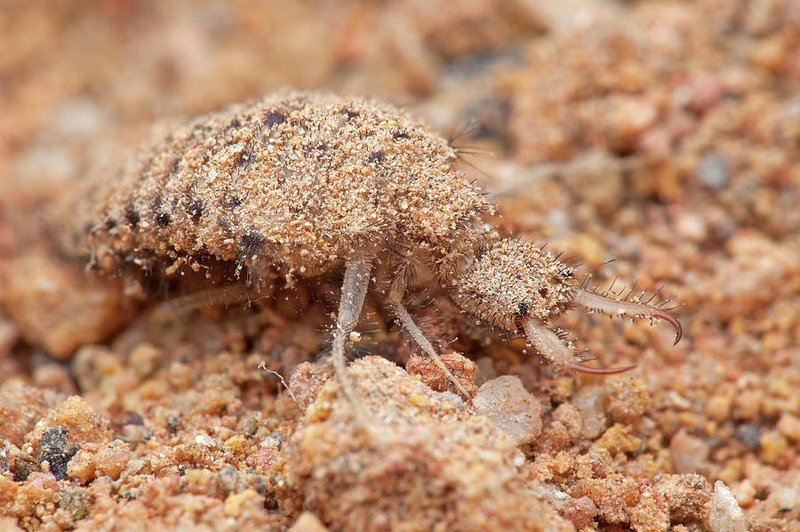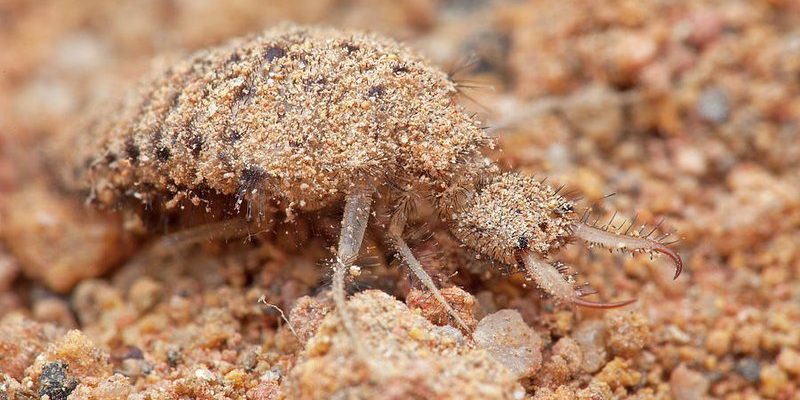
Ant lions, belonging to the family Myrmeleontidae, are more than just a funny name. They spend the majority of their lives in this larvae stage, where they’re fiercely focused on catching food. They create conical pits in sandy soil—perfect traps for ants. Observing them in the wild gives us insights into how they adapt to environmental changes throughout the year. Whether you’re a student of biology, an aspiring naturalist, or simply curious about creepy crawlies, understanding their seasonal behavior can enrich your appreciation for the delicate balance of ecosystems.
What Are Ant Lion Larvae?
Ant lion larvae are the juvenile form of the ant lion, an insect that belongs to the same order as bees, wasps, and butterflies. These larvae are typically about an inch long and resemble small alligators with their elongated bodies and large, pincer-like jaws. Most of their life is spent burrowed in sandy soil, waiting for their next meal to stumble into their cleverly crafted traps.
These larvae are not only exceptional predators but also exhibit fascinating behaviors when it comes to hunting. Their primary diet consists of ants, which they catch by luring them into their conical pits. This ambush tactic is not just effective; it’s also quite the spectacle if you happen to catch it in action. Imagine watching a tiny, hidden predator spring into action as it captures its prey!
The Influence of Seasonal Changes
Just like we adjust our activities with the seasons, ant lion larvae change their behavior based on environmental factors. Temperature, moisture, and food availability play pivotal roles in how these larvae behave throughout the year. For instance, during warmer months, you might find them more active and hunting more vigorously. This is largely because they thrive in dry, sandy areas where temperatures are optimal for their predatory lifestyle.
In contrast, during the colder months, their activity decreases significantly. They may burrow deeper into the sand or enter a state of dormancy to conserve energy. It’s like pressing the pause button on life until conditions are favorable again. This behavior is critical for survival, as it helps them manage resources during times when food is scarce.
Spring: The Active Season
As spring rolls around, the world comes alive—and so do ant lion larvae. When temperatures begin to rise, these little predators emerge from their burrows, ready to hunt. The warmth encourages them to move to the surface, where they can construct their iconic pits once again.
This season is particularly exciting for ant lions as they take full advantage of the increase in ant activity. With ants becoming more mobile, the larvae can rebuild their traps and gear up for a feeding frenzy. It’s in springtime that researchers often observe heightened predatory behaviors, making it an ideal time for field studies. Watching an ant lion larvae stealthily capture its prey is like witnessing nature’s clockwork at play!
Summer: The Peak Activity
Summer is when ant lion larvae truly shine. With long days and plenty of warm sunshine, they are at their most active. During this peak season, you can find them eagerly digging deeper and expanding their pits to catch as many ants as possible. The warm, dry weather creates ideal hunting conditions, leading to a spike in their hunting efficiency.
You might think of this as their “season of plenty.” Ant lions are known to feast on the ants that fall into their traps, sometimes consuming multiple ants in a single day. This increases their growth and prepares them for their eventual transformation into adult ant lions. In summer, researchers typically document fascinating behaviors and feeding strategies, enhancing our understanding of their predatory skills.
Fall: Preparing for Change
As summer fades into fall, ant lion larvae are faced with a dilemma: how to prepare for the incoming colder months. During this transition, their behavior changes yet again. They might not hunt as aggressively, recognizing that their time for feeding is dwindling. Instead, they focus on storing energy and preparing for dormancy.
In this season, you may also observe them reinforcing their pits and ensuring they’re ready for the last few ants to pass by. It’s almost like they’re setting up their cozy little homes for the winter. By the time the cold creeps in, they will have adapted, ensuring they have enough energy to weather the incoming freeze.
Winter: Rest and Survival
Winter presents a challenge for ant lion larvae. As temperatures drop, these little creatures go into a state of dormancy. It’s their version of hibernation, where they slow down all of their activities to conserve energy. This is a critical survival tactic, as food becomes scarce in the cold months.
During winter, ant lion larvae may burrow deeper into the sand, finding refuge below the frost line. This ensures they remain insulated against the chill. Field studies have shown that during this period, they rely on their body’s reserves until spring returns, when they can once again emerge and feast. It’s a remarkable testament to their resilience and adaptability in the face of changing seasons.
Why Understanding Ant Lion Behavior Matters
Studying the seasonal behavior of ant lion larvae offers more than just a glimpse into their lives; it provides insights into the overall health of ecosystems. These larvae play a crucial role in controlling ant populations, which helps maintain the balance within their habitats. By understanding their behaviors and survival tactics, researchers can monitor environmental changes and gauge ecosystem health.
Additionally, observing these fascinating creatures can spark interest in entomology and ecology among students and nature enthusiasts alike. The more we know about small creatures like ant lion larvae, the better equipped we become to protect and preserve our natural environments.
In conclusion, the seasonal behavior patterns of ant lion larvae offer a captivating glimpse into how life adapts and thrives. From their strategic ambush tactics in spring and summer to their dormancy in winter, these little predators are a testament to nature’s ingenuity. So, next time you’re out in the wild or even just enjoying a sunny day, take a moment to appreciate these unseen hunters and the roles they play in the intricate web of life. There’s a whole world of stories waiting just beneath the surface!

